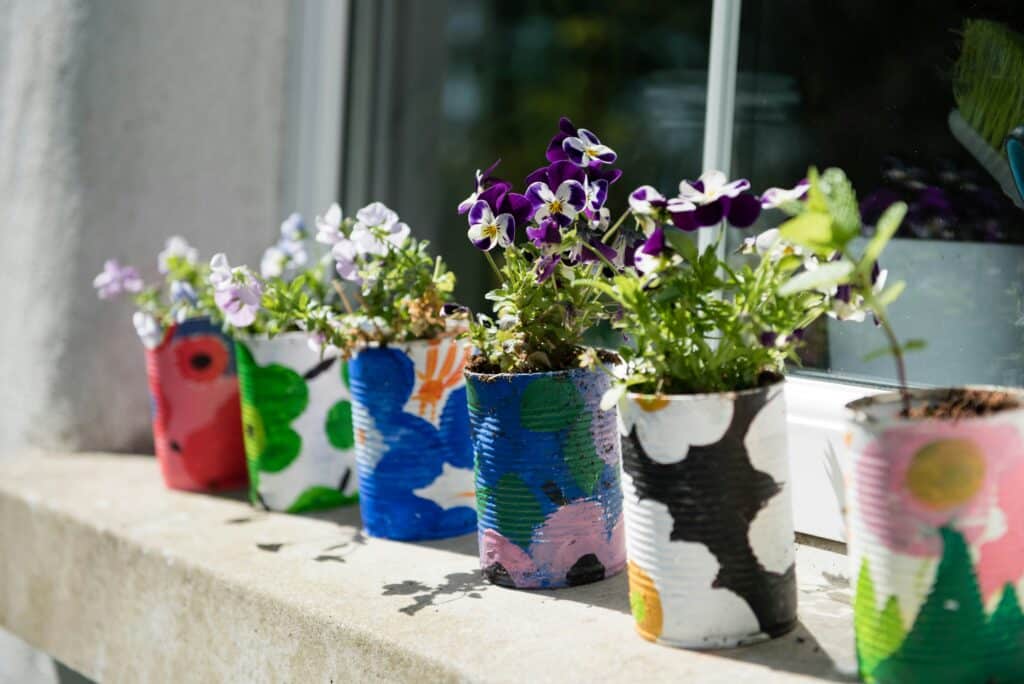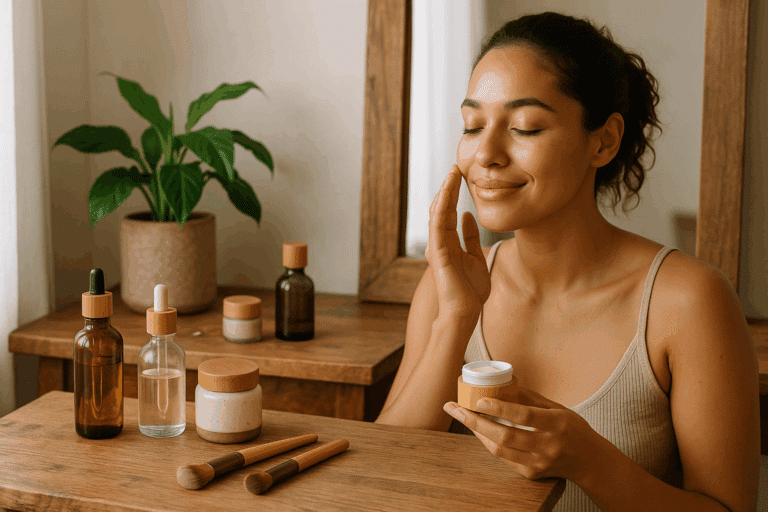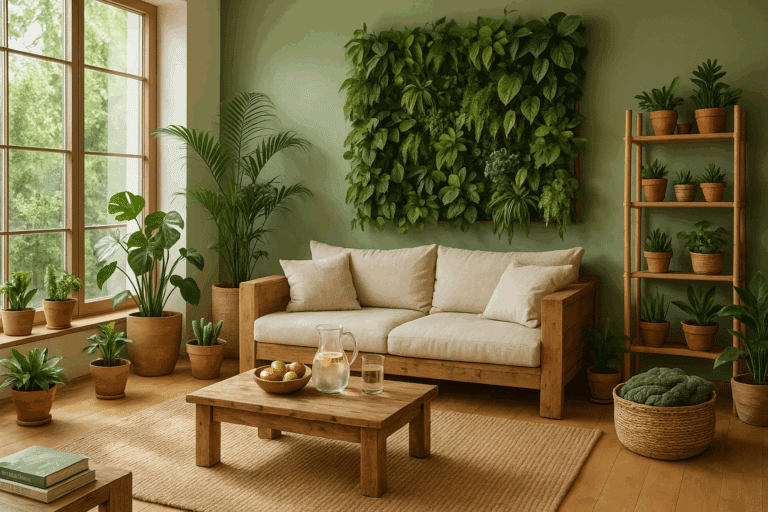Tired of the usual, plain containers that do nothing to elevate the aesthetic appeal of your verdant friends? This post is exactly what you need to revitalize the look of your green space with style and personality!
We’ll delve into the concept of upcycling fabric pot covers to transform your standard pots into chic containers. Not only is this an eco-friendly solution, but it also adds a distinctive touch of charm to your green living space. These upcycled fabric pot covers can be the perfect accessory for your plants, giving them a trendy makeover that will make your friends green with envy!

With an easy-to-follow guide, we aim to inspire you to tap into your creative side and breathe new life into your planters. You’ll discover how to repurpose unused fabrics into eye-catching pot covers, adding a splash of color and pattern to your indoor or outdoor garden. Plus, we’ll share some tips on choosing the right fabric for durability and aesthetic appeal.
So, get ready to embark on a green home makeover journey. Through upcycling fabric pot covers, we’ll show you how to accentuate your plants, turning your containers from drab to fab. It’s all about creating a greener, stylish, and personalized home environment, one pot at a time! 🌿🏡🎨
Understanding the Basics of Upcycling and Fabric Pot Covers
In an era where environmental consciousness is more important than ever, the movement toward sustainability and eco-friendly practices is growing rapidly. People are now more aware of how small changes in lifestyle can contribute to the well-being of the planet. One practice that has become both trendy and impactful in this regard is upcycling.
Unlike recycling—which involves breaking down materials to their base elements before reusing them—upcycling gives new life to old items by turning them into something better, more useful, or more beautiful. And when it comes to home decor, one of the most charming and easy-to-make upcycled projects is the creation of fabric pot covers.
Instead of throwing away old clothes, sheets, or leftover fabric scraps, you can repurpose them into stylish, reusable covers for your planters. Not only does this add personality and flair to your indoor or outdoor plants, but it also aligns perfectly with the eco-conscious ethos of reducing waste and celebrating creativity.
Benefits of Using Fabric Pot Covers
Fabric pot covers do more than just beautify your planters. They offer a wide range of functional, environmental, and aesthetic advantages that make them a must-try for anyone looking to blend style with sustainability.
1. Aesthetic Transformation
The most obvious benefit is visual appeal. Basic plastic pots often look dull or utilitarian, especially when placed inside modern or artistically designed interiors. Fabric covers instantly elevate these containers, helping them blend into or enhance your room’s theme. Whether you’re going for minimalist, bohemian, vintage, or modern farmhouse, your fabric choice can reflect and support your style.
2. Seasonal Versatility
You can design fabric covers that suit different seasons or holidays. Floral fabrics in spring, pastels in summer, plaid or earthy tones for autumn, and cozy knits or velvet for winter. This gives you a flexible, low-cost way to refresh your decor regularly.
3. Temperature Insulation
Fabric acts as an insulating layer, protecting the roots of your plants from sudden temperature shifts, particularly for indoor plants placed near windows or doors. While it’s not a replacement for proper plant care, this added insulation can help maintain root health.
4. Sustainability
Upcycling old fabric instead of throwing it away keeps textile waste out of landfills. By using what you already have, you’re reducing your carbon footprint and making more conscious consumer decisions.
5. Budget-Friendly
Buying decorative planters or baskets can be costly, especially if you have multiple houseplants. Fabric pot covers cost virtually nothing to make if you use recycled materials—and they look just as beautiful, if not more unique.
6. Easy Customization
You can personalize each fabric pot cover to match a room’s color palette or to reflect your personal tastes. Add pockets, trim, fringe, hand-painted details, or buttons—there’s no limit to what you can create.
Materials Required for Upcycled Fabric Pot Covers
Creating fabric pot covers doesn’t require advanced sewing skills or expensive materials. Here’s what you’ll need:
- Fabric scraps or old clothes (t-shirts, jeans, curtains, tablecloths, bedsheets, etc.)
- Scissors or rotary cutter
- Thread and sewing needle (or a sewing machine if preferred)
- Measuring tape or ruler
- Straight pins or clips
- Planters to fit
- Optional add-ons: Velcro, elastic bands, buttons, drawstrings, fabric glue
Pro tip: For a sturdier pot cover, consider using double layers of fabric or lining the inside with interfacing, especially if the outer fabric is thin or stretchy.
Selecting the Right Fabric
Not all fabrics are created equal. Here are a few factors to consider when selecting the material:
1. Durability
Choose a fabric that can withstand regular handling and possibly the occasional splash of water. Cotton, denim, canvas, and linen are great options. Avoid materials that are too delicate, like silk or lace, unless you’re layering them with something sturdier.
2. Washability
Since these covers will be near water and soil, pick fabrics that are machine-washable or easy to spot clean.
3. Aesthetic and Texture
Bright prints, soft neutrals, earthy tones, or even monochrome color schemes can work depending on your style. Look for interesting textures, such as corduroy, burlap, or woven cotton for added depth.
Step-by-Step Guide to Create Fabric Pot Covers
Even if you’ve never sewn before, this project is beginner-friendly. Here’s a detailed breakdown:
Step 1: Measuring Your Planter
Use a soft measuring tape to measure:
- Height of the pot
- Circumference or diameter of the top rim
- Bottom width (if you want a snug fit)
Add 1–2 inches for seam allowance.
Step 2: Cutting the Fabric
Based on your measurements:
- Cut one large rectangle (for the sides)
- Optionally, cut a circle (for the base)
If you’re using a stretchable fabric like jersey, reduce seam allowance slightly to avoid a loose fit.
Step 3: Sewing the Tube
Fold the rectangle lengthwise, right sides facing, and sew along the short edge. You’ll now have a fabric tube.
Step 4: Sewing the Base (Optional)
Pin and sew the circular fabric piece to the bottom of the tube. This adds structure, but you can also skip it and just fold the bottom for a looser, “basket-style” fit.
Step 5: Hemming the Top
Fold over the top edge by about 1/2 inch and hem it. For a finished look, you can also fold a cuff or add decorative trim.
Step 6: Final Fit
Turn the cover right-side out and slide it over your planter. Adjust for fit and flare as needed.
Creative Variations
Now that you’ve mastered the basic version, explore these creative ideas:
1. Drawstring Covers
Sew a channel along the top and thread a cord or ribbon to cinch the top closed.
2. Fold-Over Tops
Make your covers taller than your pots and fold the tops over for a cozy, cuffed look.
3. Patchwork Style
Use different fabric scraps to create a patchwork design. Great for using up small pieces and adds a boho vibe.
4. No-Sew Options
If you don’t want to sew, use fabric glue or iron-on adhesive tape. You can even wrap and tie fabric like a Japanese furoshiki style.
Maintaining Fabric Pot Covers
Even the most beautiful fabric pot cover won’t stay fresh if neglected. As with any element of home decor—especially those near soil, moisture, and sunlight—fabric covers require some basic maintenance to preserve their charm and functionality over time.
Regular Cleaning
Dust, splashes from watering, or even accidental spills can dull the appearance of your covers. To keep them looking new:
- Spot clean spills immediately using a damp cloth and mild detergent. The sooner you act, the easier it is to prevent staining.
- If the fabric is labeled machine-washable, wash on a gentle or delicate cycle using cold water and mild, eco-friendly detergent.
- Avoid using bleach or harsh stain removers, as they can degrade fabric fibers and fade colors.
- Air dry instead of using a dryer to prevent shrinkage and preserve the shape and quality of the fabric.
- For covers with structural elements (like interfacing or batting), hand washing is a safer option.
If you have decorative embellishments on your covers such as buttons, trim, or embroidery, consider hand washing or using a laundry bag during machine washing to protect the details.
Watering Practices
To extend the life of your fabric pot covers, it’s essential to adjust your watering habits:
- Water your plants directly into the soil, not over the leaves or down the sides of the pot.
- Remove the fabric cover before watering if you know your plant tends to overflow or leak.
- Place a drainage tray beneath your pots so that excess water doesn’t get absorbed by the fabric. A moisture barrier can help keep the fabric dry and mold-free.
- Allow the plant’s base and pot to dry thoroughly before slipping the cover back on.
Avoid letting water pool inside the cover or accumulate at the bottom. Prolonged exposure to moisture can lead to mildew, staining, or odor, especially in materials like cotton or linen.
Seasonal Rotation
Just as you might rotate cushions or bedding with the seasons, rotating your fabric pot covers serves both a decorative and functional purpose.
- Prolonged exposure to direct sunlight can cause colors to fade unevenly. Changing covers periodically ensures they wear evenly and maintain vibrancy.
- Use this opportunity to align your plant display with the mood of the season:
- Soft pastels or floral prints in spring
- Tropical brights or nautical stripes in summer
- Deep oranges, rusts, and earth tones in autumn
- Cozy plaids, velvets, or knits in winter
Having multiple sets also makes cleaning and rotation easier—simply swap in a clean set while the others are washed or aired out.
Decorating with Fabric Pot Covers
Your upcycled pot covers can be far more than functional. With thoughtful placement and styling, they become key visual elements in your home decor. Here are creative, aesthetic ways to display and make the most of your upcycled fabric pot covers:
1. Groupings
Group pots of varying heights and widths into clusters of three, five, or seven. Odd numbers are generally more visually dynamic. Choose fabrics that complement each other in color or texture—such as different shades of blue or various earth tones.
To avoid overwhelming the space, keep one variable consistent: use the same fabric pattern with different plants, or use different fabrics in similar colors.
Display groupings:
- On sideboards or plant stands
- At the entrance of your home
- As a centerpiece on dining or coffee tables
Add natural elements like stones, branches, or candles to complete the arrangement.
2. Windowsills and Desktops
Small fabric-covered pots work wonders in compact spaces. Herbs in fabric pots can brighten your kitchen windowsill, while succulents or air plants in mini fabric-covered tins or jars are great for home office desks or shelves.
Select calming tones like sage green, beige, or soft grey to create a soothing ambiance that enhances concentration and relaxation.
You can even coordinate your pot covers with:
- Desk accessories (pen holders, mouse pads)
- Curtain or napkin fabric
- Notebooks or folders (for a subtle visual rhythm)
3. Theme Corners
Curate a cozy corner with a decorative theme. Whether it’s a meditation nook, a reading space, or a breakfast table corner, fabric pot covers can anchor the area with natural warmth.
Ideas include:
- Boho theme: Mix macramé wall hangings with fabric covers in tribal or paisley prints.
- Scandinavian theme: Use muted tones like oatmeal, blush, and charcoal in linen or wool textures.
- Cottagecore: Floral or gingham prints with lace or ruffled trims.
Add throw pillows, warm lighting, or a woven rug to enhance the mood.
4. Party and Gift Ideas
Upcycled fabric pot covers make for thoughtful and reusable gift wraps for plant-based presents. They’re perfect for:
- Housewarmings
- Mother’s Day
- Eco-conscious wedding favors
- Baby showers or birthdays
Use festive or personalized fabric (like a fabric patch with a hand-embroidered name) to make the gift extra special.
For parties or events:
- Display small covered pots as centerpieces or table markers.
- Include tags or cards with care instructions or inspirational quotes.
- Let guests take them home as favors—eco-friendly and meaningful.
5. Wall-Mounted Planters
Want to get extra creative? Fabric pot covers can be adapted for wall-mounted containers like pouches or hanging planters. Use sturdy fabric (like denim or canvas), add grommets or loops, and hang them from wooden dowels or coat hooks.
This is a great way to:
- Save space in small apartments
- Create a vertical herb garden
- Add greenery to a kitchen, bathroom, or hallway
Be sure to use lightweight plants and secure wall mounts.le, eco-conscious alternative to plastic wrap or gift bags.
Upcycling for a Greener Lifestyle
The process of upcycling fabric for pot covers not only improves your home’s aesthetic but contributes to a more sustainable way of living:
- Reduces textile waste, which otherwise sits in landfills for decades
- Minimizes buying new plastic decor, reducing manufacturing demand
- Encourages mindful consumerism, valuing what you already own
- Supports slow design—the idea that beauty, functionality, and ethics can coexist
You can take it even further by:
- Hosting a fabric swap with friends
- Donating extra covers to community gardens or local plant shops
- Teaching others the skill to multiply impact
Wrapping Up
Upcycling fabric into pot covers is one of those rare projects that combines style, sustainability, and self-expression. It’s an opportunity to rethink waste, rediscover forgotten items in your closet, and create something that brings beauty and calm into your daily space.
And the best part? No two covers are ever exactly alike. Every seam, every fabric choice tells a small story—of where it came from, and how it’s been lovingly repurposed.
So, the next time you glance at an old shirt or outgrown dress, don’t toss it—transform it. Let your plants wear it proudly.
Conclusion
In conclusion, revamping your planters with upcycled fabric pot covers is more than just a creative DIY project—it’s a lifestyle choice that embraces sustainability, self-sufficiency, and artistic expression. It allows you to decorate thoughtfully, live consciously, and surround yourself with items that not only look good but also feel good to use.
Whether you’re a seasoned upcycler or just starting your journey toward greener living, this project is a perfect place to begin. It’s inexpensive, highly customizable, and deeply satisfying.
So grab those fabric scraps, dust off your scissors, and start sewing (or gluing!) your way to a more stylish and sustainable home—one planter at a time. 🌱🪴♻️



